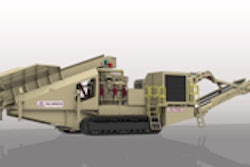An Ontario Life Line
By Kirk Landers, Editor Emeritus
For the past two decades or so, one of the great highlights of my year has been heading east on Ontario’s Highway 11 after entering Canada at the International Falls, Minn./Fort Frances, Ont. border crossing.
It is the final leg of a 12-hour drive from Chicago, a drive in which the population density thins with each passing hour until, finally, I am camped in a wilderness dozens of miles from any road where there are more moose per square mile than people.
 [email protected]
[email protected]Highway 11 is the perfect final driving leg to that journey. It is a southern alternate route to Highway 17, the main part of the Trans-Canada Highway in the region. Highway 11 links Fort Frances, a town of about 8,500, to Thunder Bay, a port city of more than 100,000 on the shores of Lake Superior more than 300 kilometers (185 miles) to the east. Once you emerge from the Fort Frances area, traffic evaporates and you are alone on a bucolic, two-lane highway with a posted top-speed limit of 90 km/hour (54 mph), slower on the many sweeping curves.
In 20 years of traversing this highway, I have stopped for road-crossing wolves and moose, admired hundreds of inukshuks (Inuit-inspired loose-rock sculptures) constructed by locals waiting for school buses or hitch-hiked rides, and seen eagles and hawks floating on currents overhead.
The highway is carved out of the ancient rocks of the Canadian Shield, a geographic phenomenon created by the two great glacial ages in the earth’s distant past. Most of what passes for soil in the region is decayed pine needles and other flora–less than ideal for a subbase. The native soils were swept south by the glaciers thousands of years ago, and now yield prodigious amounts of corn and soybeans in the north central states of the United States.
Most of its length is far from Thunder Bay, the only population center large enough to support a road contractor, so road maintenance, repair and replacement have to be difficult, expensive issues. And those are hardly the only complications for road management. The region is wet, laced with lakes and rivers and bogs, and the winter freezes are mind-boggling, with ambient temperatures reaching minus-20° F every winter, and minus-30° F or colder when things get tough.
Over 20 years of travel on Highway 11, I’ve seen a wide range of pavement conditions. One year, the ruts in a section just west of Atikokan were so deep that a moderate rain forced me to reduce my travel speed to 25 mph to keep from hydroplaning. Potholes require quick attention because the road is narrow and, in many places, has no shoulder to help motorists dodge the abyss.
In recent years, the province has variously resurfaced or rebuilt most of the sections of Highway 11 between Fort Frances and Atikokan, and the drive has become quieter and more comfortable, with less wear and tear on the car.
What’s interesting to me is that the local people seem to really appreciate the improvements. In Atikokan, people mildly note the construction delays, and rave about the results. Where I come from, we tend to expect smooth roads. We rail when the roads are bad; when they’re good, we complain about how much it cost.
I think the difference between us Chicagoans and the hardy folks of the Canadian Shield is one of proximity more than culture. When the nearest grocery store is 10 miles away – and the next nearest one is 100 miles away – and the temperature is minus-20° F, roads are not a convenience; they are a life line.
If only we could plant some small part of that sentiment in the minds of our fellow citizens, perhaps the United States would have the road program we need.v












